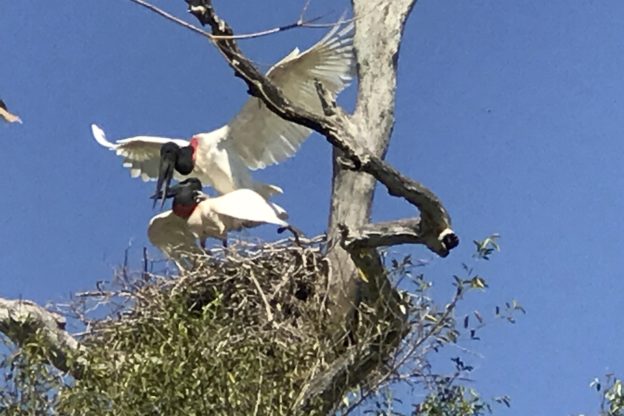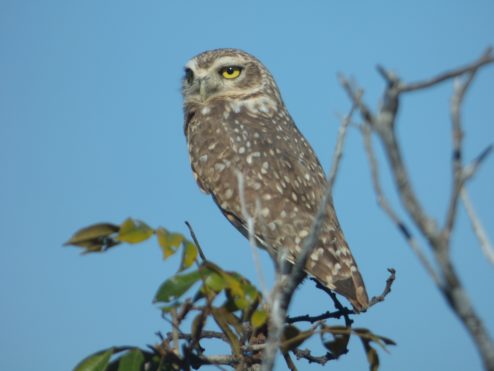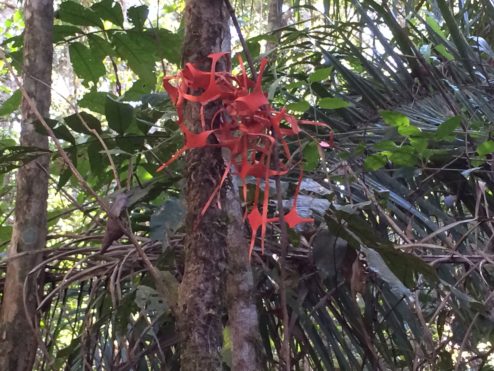Birds, birds, birds. From the burrowing owl above, to the Jabiru Stork you’ll see as the featured image (if viewing on anything except a hand held device), our species list is exploding. Our i-phones were not up to bird photography, so we give buckets of photo credit to Karen Share, with gratitude for her telephoto lens and generous nature. Our guides had great scopes but pictures through them were less successful.
Pronounced, “sair-HA-doe”, this savanna covers between 20-25 % of Brazil; half of it has already been converted to agricultural use. It is an area responsible for more than half of Brazil’s soybeans, 40% of its beef and 84% percent of its cotton; adding lime and phosphorus can make poor soil arable with sufficient water. So successful is production here, the Capital of Brazil was moved to Brazilia to accommodate agricultural needs. We flew about an hour from Sao Paulo to Cuiaba, and then drove two hours up into the highlands about 3,000 ft above to the Cerrado. At the horizon below, you can also see the Pantanal, the largest tropical wetlands in the world.
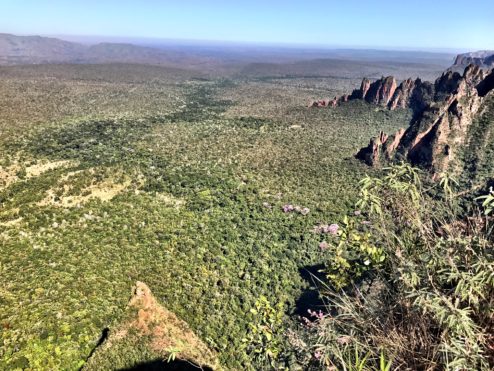 The Cerrado has an enormous diversity of plant life that offers pharmaceutical solutions we know of already (the Barbato plant here allegedly cures HPV), and endless untested possibilities. As a comparison, California has 6,000 species of flora and fauna, whereas this area of Brazil, including the Pantanal, boasts over 10,000 species! We were fascinated by this plant that can self-imolate to start wildfires when the area needs to be refreshed…
The Cerrado has an enormous diversity of plant life that offers pharmaceutical solutions we know of already (the Barbato plant here allegedly cures HPV), and endless untested possibilities. As a comparison, California has 6,000 species of flora and fauna, whereas this area of Brazil, including the Pantanal, boasts over 10,000 species! We were fascinated by this plant that can self-imolate to start wildfires when the area needs to be refreshed…
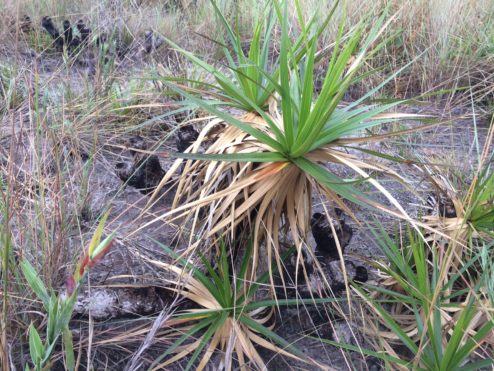 …or this one where the fractured line at the bottom of the seed pod, drops away to dump a huge load of seeds, only in perfect conditions.
…or this one where the fractured line at the bottom of the seed pod, drops away to dump a huge load of seeds, only in perfect conditions.
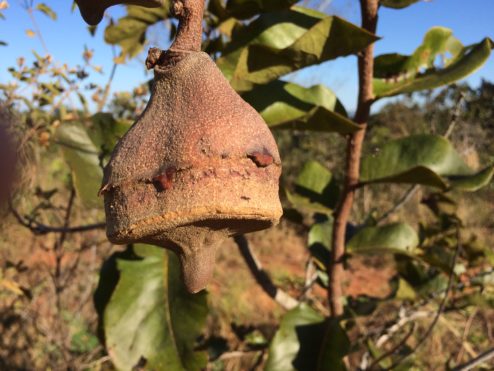 When the fires abate, this Pepalanto plant below is the first to come back. What a beauty!
When the fires abate, this Pepalanto plant below is the first to come back. What a beauty!
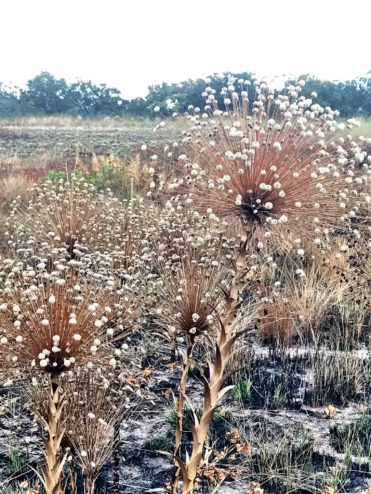 There are also great escarpments of exposed granite, making sculpture gardens…
There are also great escarpments of exposed granite, making sculpture gardens…
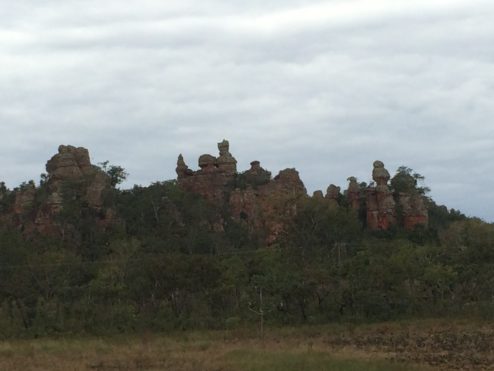 …and sheer cliffs for safe nesting for red and green macaw pairs. The waters that originate here flow either north into the Pantanal wetlands or south to the Atlantic. That means you can pee into the Amazon River here! Yippee!
…and sheer cliffs for safe nesting for red and green macaw pairs. The waters that originate here flow either north into the Pantanal wetlands or south to the Atlantic. That means you can pee into the Amazon River here! Yippee!
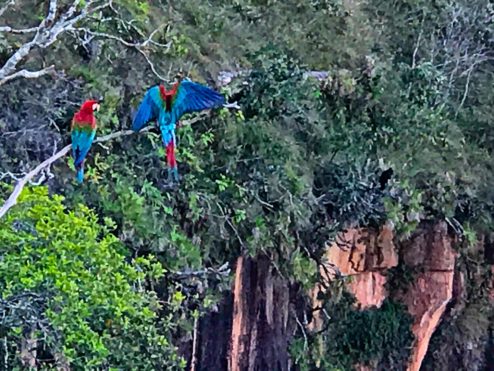 What we noticed is that Brazilians will find and enjoy even the smallest tributaries…they love water!
What we noticed is that Brazilians will find and enjoy even the smallest tributaries…they love water!
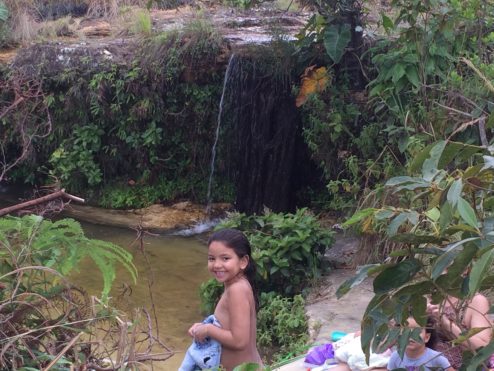 We enjoyed the visual map of the early life of the Leaf Miner, who is laid as an egg on a leaf, embeds itself inside the leaf and eats its way around the leaf until it finally gets fat enough to pupate, and flies away.
We enjoyed the visual map of the early life of the Leaf Miner, who is laid as an egg on a leaf, embeds itself inside the leaf and eats its way around the leaf until it finally gets fat enough to pupate, and flies away.
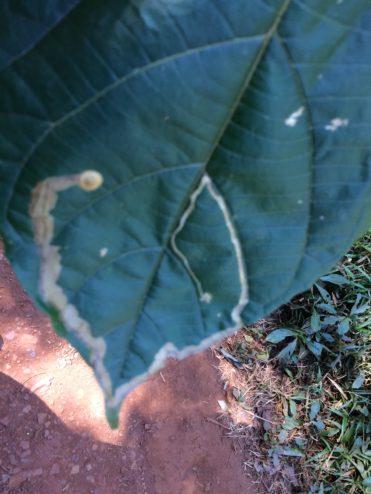 So many beautiful floral displays that I fell for the biologist’s silly spiel on this delicate tropical flower…until I looked closely and realized he was teasing us, because it is a bundle of plastic fencing material! Ha! Got us!
So many beautiful floral displays that I fell for the biologist’s silly spiel on this delicate tropical flower…until I looked closely and realized he was teasing us, because it is a bundle of plastic fencing material! Ha! Got us!

